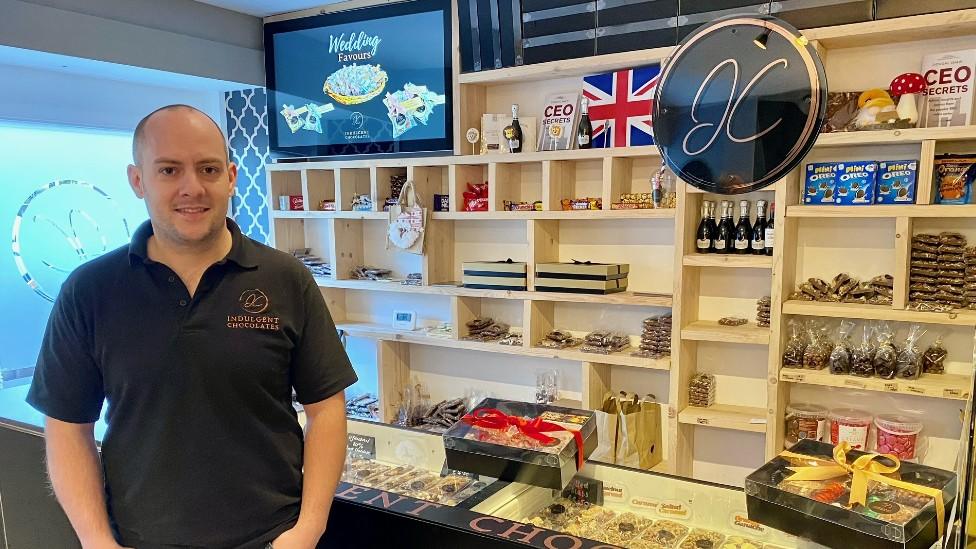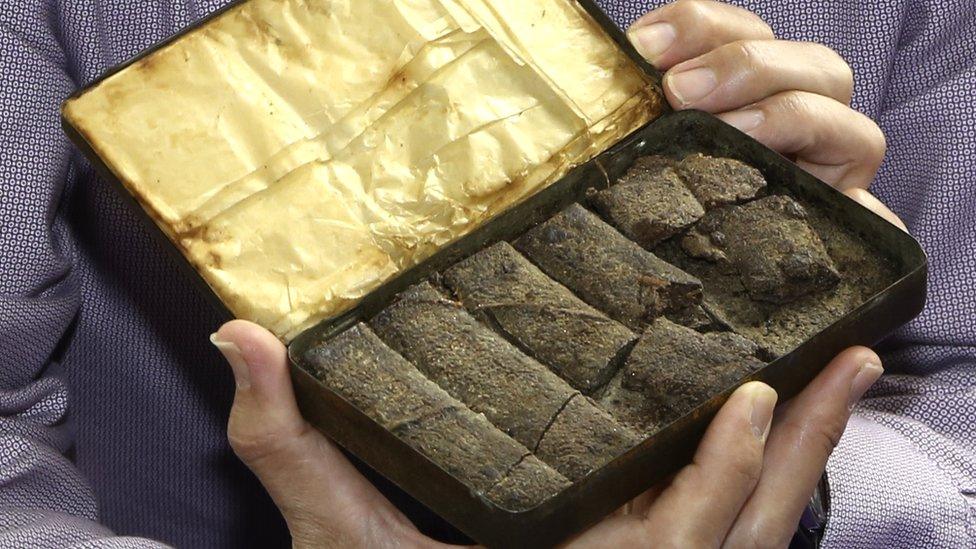How one Canadian woman got rid of 133,000 chocolate bars
- Published

Crystal Regehr Westergard owns Canadian Candy Nostalgia, a company that specalises in reviving discontinued treats
What would you do with 133,000 chocolate bars? A Canadian woman found herself asking that question after her candy company made too many delicious treats, all with a looming expiry date of June. It is a dilemma that made national headlines and ended with a sweet outcome.
Crystal Regehr Westergard specialises in reviving popular treats from the past.
The full-time physiotherapist started her company, Canadian Candy Nostalgia, in 2018 to bring back Cuban Lunch, a retro candy that dates back to World War II and that was near and dear to her mother's heart.
Two years ago, Ms Regehr Westergard resurrected yet another discontinued chocolate bar: Rum & Butter, a Cadbury-made, non-alcoholic bar with a gooey, rum-flavoured center that was once popular in the 1980s but ceased to exist in 1996.
Its revival was an instant hit. She sold a little over a million bars after the first round of manufacturing, and her company was eager to make more.
A series of pandemic-related mishaps, however, led to the production of 333,000 bars on one single, fateful day in June 2022. This meant that all of those bars had the same expiry date stamped on them - a day one year away.
Some may think it is easy to get rid of that much chocolate fairly quickly, but the surplus of candy proved to be quite the predicament for Ms Regehr Westergard.
While Canada does not have regulations requiring expiry dates on chocolate, "grocery stores stopped being willing to buy from us in January", she told the BBC, because the best-before date was fast approaching.
That left her with 133,000 bars of unsold candy - about 5,540 boxes of chocolate stored in a secure food warehouse in Calgary, Alberta , a three-hour drive from Ms Regehr Westergard's home in the city of Camrose.
This meant that she could not give out the chocolate bars one-by-one to her neighbours, for example. Nor could she send just one box to those who asked, as boxes were stored together in candy pallets that weighed about 1,000lbs (453.5kg) each.
She also learned that the Calgary food bank had a no-candy policy, so that was not an option either.
Ms Regehr Westergard was resigned to the fact that she needed to give away those candy bars for free, and she had to come up with a plan quickly.
"I was becoming increasingly aware that if I just left the (chocolate) there, it would come to its stale date and that we'd have to throw them out," she said. "That was my worst case scenario."
So she did what most people in nowadays do when faced with a problem: ask the internet for help.
Her story caught the attention of a journalist at the Globe and Mail newspaper, who wrote about Ms Regehr Westergard's conundrum, external on 10 April. Soon after, her inbox was flooded with messages from people around the world, she said, asking if they could get a box for themselves.
But Ms Regehr Westergard wanted to focus on giving away the boxes in bulk to nearby organisations that were able to pick them up.
Thanks to the publicity, her chocolate bars have since found homes in a variety of places in need.
This includes a local Ukrainian church assisting newly-arrived refugees, Calgary's drop-in center for unhoused people, and a fire department in neighbouring Saskatchewan.
Food banks in the Calgary area also reached out to take some chocolate off of her hands despite the no-candy policy, and a local charity is using the bars to raise money to send underprivileged children to camp.
All of the candy is now accounted for, Ms Regehr Westergard said, and she could not be more relieved with this sweet ending.
"I'm glad you're writing a follow-up," she told the BBC, as she is still receiving messages daily from people across North America asking if she has any treats left to give.
- Published15 March 2023

- Published18 December 2022

- Published17 September 2022
